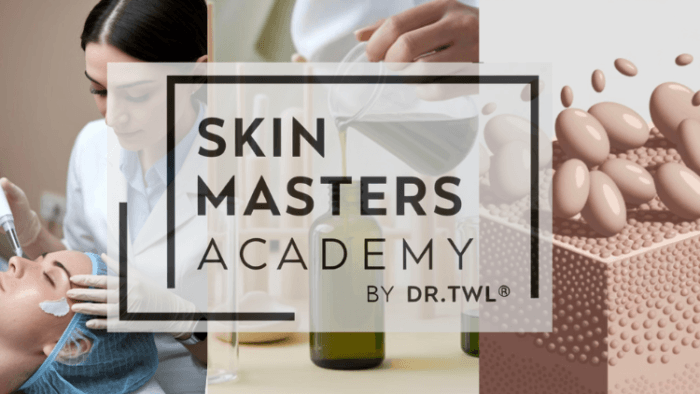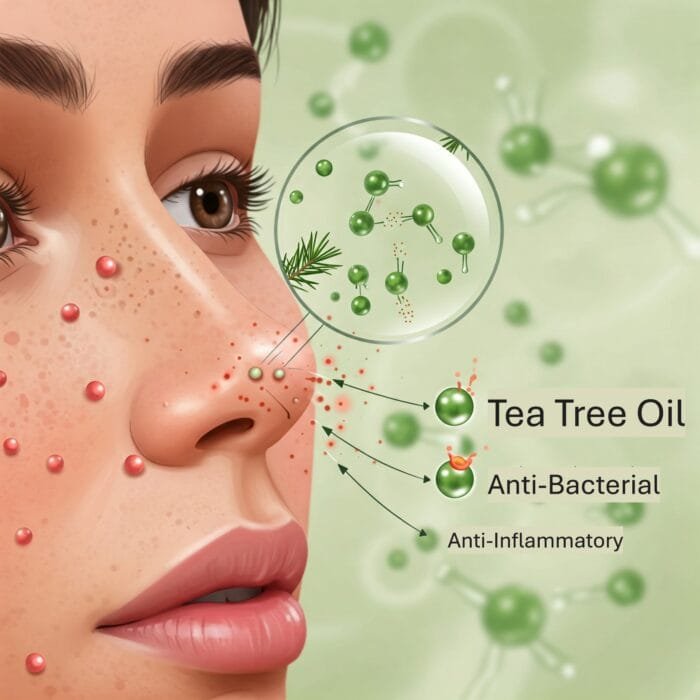Common Acne Ingredients to Know: Salicylic Acid, Benzoyl Peroxide & Azelaic Acid
April 21, 2025Hello and welcome to Skin Deep Dive, a brand new podcast series on The Acne Podcast by me Dr.TWL, and today we’re tackling a topic that floods the aisles and our social media feeds: acne ingredients. If you’ve ever stood bewildered in front of a shelf packed with spot treatments, cleansers, and serums, all promising clear skin, you know the struggle. What acne ingredients actually work? Is natural always better? And what on earth is the difference between Salicylic Acid and Azelaic Acid?
Today, we’re decoding those labels. We’ll cover the tried-and-true classics, introduce some rising stars making waves, touch on the natural alternatives, and give you some tips on choosing what might be right for you. Ready to dive in?

Traditional Acne Ingredients
Let’s start with the heavy hitters, the acne ingredients most people have heard of. First up: Benzoyl Peroxide, or BPO.
This one’s been a go-to for decades, and for good reason. BPO works primarily by killing the Cutibacterium acnes bacteria – one of the key culprits behind inflamed pimples. It also helps to gently peel the skin, removing dead cells and excess oil. You’ll find it in various concentrations, usually from 2.5% up to 10%.
Pro-Tip: Start low! A 2.5% or 5% concentration can be just as effective as 10% but often with less irritation. The Catch: BPO can be quite drying and irritating for some skin types, especially initially. It’s also famous for bleaching fabrics – so use white towels and pillowcases! You might have also heard some news reports in the past year or so about potential contaminants like benzene found in some BPO products due to stability issues. While regulatory bodies monitor this, it’s a reminder to buy from reputable brands and check for any product safety alerts if you have concerns.
Next up, another classic: Salicylic Acid. This is a Beta Hydroxy Acid, or BHA. What makes Salicylic Acid special is that it’s oil-soluble. This means it can penetrate deeper into pores that are clogged with oil and dead skin cells, exfoliating inside the pore lining.
This makes it particularly effective for blackheads and whiteheads (comedonal acne). It also has some anti-inflammatory properties. Like BPO, it can be drying, so monitor how your skin reacts. You’ll find it in cleansers, toners, serums, and spot treatments, typically around 0.5% to 2% concentration in over-the-counter products.
Okay, let’s move on to some acne ingredients that have gained huge popularity more recently – the rising stars of acne care. First, let’s talk about Niacinamide.
Star Acne Ingredients
Niacinamide, which is a form of Vitamin B3, is a fantastic multi-tasker. It’s primarily known for its anti-inflammatory properties, helping to calm down those red, angry pimples. But it does more! It can help regulate oil production, strengthen your skin barrier (which is crucial when using potentially irritating actives), and even help fade the red or brown marks (post-inflammatory hyperpigmentation) left behind after a breakout.
Why the buzz? Niacinamide is generally well-tolerated, even by sensitive skin types. It plays nicely with most other acne ingredients, making it easy to incorporate into an existing routine. You’ll often find it in serums at concentrations from 2% to 10%.
Another star acne ingredient gaining traction is Azelaic Acid. This one is derived from grains like barley and wheat. Azelaic acid is a bit of an unsung hero. It tackles acne in several ways: it has antibacterial properties against C. acnes, it’s anti-inflammatory, it helps unclog pores by encouraging cell turnover, and it’s particularly good at reducing redness and fading post-acne marks, similar to niacinamide.
It’s often recommended for those with sensitive or rosacea-prone skin who might find other actives too harsh. Over-the-counter products usually contain up to 10%, while prescription versions go higher (15-20%) for more stubborn acne or rosacea. It can cause some initial itching or stinging, but this often subsides.
Natural Acne Ingredients
Now, what about the natural approach? There’s a huge trend towards “clean” and plant-based skincare. So, what natural ingredients show promise for acne?

The most well-known is probably Tea Tree Oil. It has documented natural antibacterial and anti-inflammatory properties. Some smaller studies suggest it might help with mild to moderate acne, and it’s often positioned as an alternative for those sensitive to BPO. Important Caveat: Tea tree oil is potent! It absolutely must be diluted before applying to the skin, as undiluted essential oils can cause significant irritation or allergic reactions. Look for products formulated with a low, safe concentration (usually under 5%). Remember, “natural” doesn’t automatically mean gentle.
Other acne ingredients like Witch Hazel (often used as an astringent) or Aloe Vera (known for soothing) are common in acne formulations, but typically play more of a supporting role rather than being the primary active ingredient. While potentially beneficial, the scientific evidence for many natural ingredients specifically targeting acne is often less robust than for ingredients like BPO, Salicylic Acid, or retinoids (which we didn’t even get to today!). But that doesn’t mean botanicals don’t work, it just means that most studies so far have focused on these synthetics. Emerging research on botanicals has shown promise, and we’ll be covering these specifically in a subsequent episode.
How do we choose?
Okay, that was a whirlwind tour of some key acne ingredients! So how do you choose?
- Consider your acne type: Blackheads and whiteheads? Salicylic Acid might be a good start. Red, inflamed pimples? Azelaic Acid, or Niacinamide could help.
- Consider your skin type: Oily skin might tolerate BPO or Salicylic Acid well. Sensitive or dry skin? Niacinamide or Azelaic Acid might be gentler options.
- Start low and go slow: Introduce only one new active ingredient at a time. Use it 2-3 times a week initially and see how your skin reacts before increasing frequency.
- Patch test: Always test a new product on a small, inconspicuous area first.
- Don’t overdo it: Using too many harsh actives can damage your skin barrier, leading to more irritation and potentially worsening acne. Focus on one or two targeted treatments. If you are struggling with acne and sensitive skin, sometimes described as the oily dehydrated skin phenomenon, stay tuned for our next episode where I’ll be covering some latest research we’ve been up to for botanical-based acne care formulations.
- Hydrate! Don’t forget a gentle moisturiser (look for ingredients like hyaluronic acid or ceramides) to support your skin barrier, even if your skin is oily.

And crucially: If over-the-counter products aren’t cutting it after several weeks, or if your acne is severe or impacting your self-esteem, please consult a board-certified dermatologist. They can provide an accurate diagnosis and discuss prescription options like retinoids, topical or oral antibiotics, or other advanced treatments tailored to you.
That’s all the time we have for today on Skin Deep Dive. I hope this helps you decode those acne ingredient lists with a bit more confidence! Remember, understanding what’s in your products is the first step towards finding what truly works for your unique skin.
Join us next week for our episode “Holistic acne treatment: is functional dermatology the way to go?” as we explore acne ingredients derived from natural sources to the treat the condition. Don’t forget to subscribe wherever you get your podcasts! Until next time, take care of your skin.
Tags: ~All Topics, Acne, Skincare